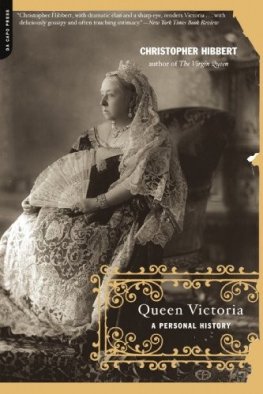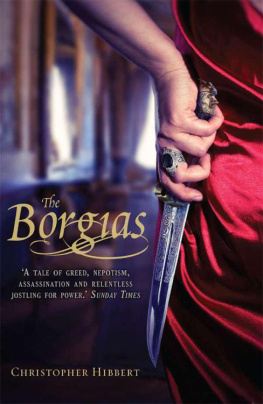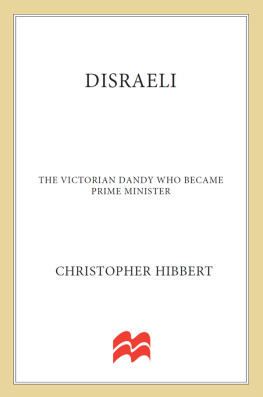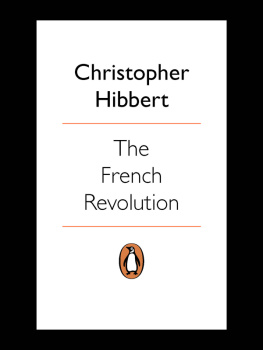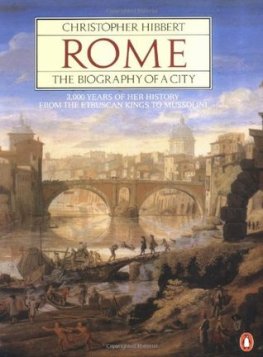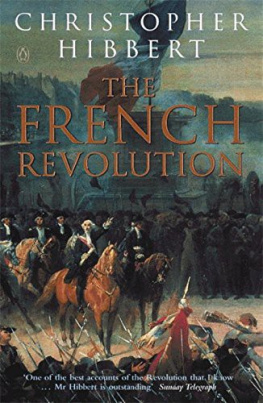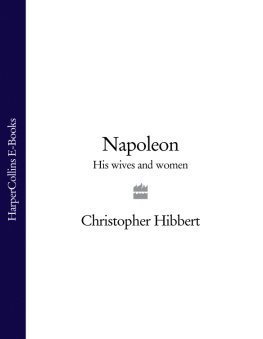Christopher Hibbert - QUEEN VICTORIA A Personal History
Here you can read online Christopher Hibbert - QUEEN VICTORIA A Personal History full text of the book (entire story) in english for free. Download pdf and epub, get meaning, cover and reviews about this ebook. genre: Non-fiction. Description of the work, (preface) as well as reviews are available. Best literature library LitArk.com created for fans of good reading and offers a wide selection of genres:
Romance novel
Science fiction
Adventure
Detective
Science
History
Home and family
Prose
Art
Politics
Computer
Non-fiction
Religion
Business
Children
Humor
Choose a favorite category and find really read worthwhile books. Enjoy immersion in the world of imagination, feel the emotions of the characters or learn something new for yourself, make an fascinating discovery.
- Book:QUEEN VICTORIA A Personal History
- Author:
- Genre:
- Rating:4 / 5
- Favourites:Add to favourites
- Your mark:
- 80
- 1
- 2
- 3
- 4
- 5
QUEEN VICTORIA A Personal History: summary, description and annotation
We offer to read an annotation, description, summary or preface (depends on what the author of the book "QUEEN VICTORIA A Personal History" wrote himself). If you haven't found the necessary information about the book — write in the comments, we will try to find it.
Christopher Hibbert: author's other books
Who wrote QUEEN VICTORIA A Personal History? Find out the surname, the name of the author of the book and a list of all author's works by series.
QUEEN VICTORIA A Personal History — read online for free the complete book (whole text) full work
Below is the text of the book, divided by pages. System saving the place of the last page read, allows you to conveniently read the book "QUEEN VICTORIA A Personal History" online for free, without having to search again every time where you left off. Put a bookmark, and you can go to the page where you finished reading at any time.
Font size:
Interval:
Bookmark:
Christopher Hibbert
QUEEN VICTORIA
A Personal History
For Amy, Lily and Rose with love
AUTHOR'S NOTE AND ACKNOWLEDGEMENTS
In an essay read to fellows and members of the Royal Society of Literature in 1972, Giles St Aubyn said that on average Queen Victoria wrote about 2,500 words every day of her adult life, achieving a total of some sixty million in the course of her long reign. If she had been a novelist her complete works would have run to seven hundred volumes, published at the rate of one a month. To her eldest daughter alone she wrote at least twice a week, and sometimes twice a day, for over forty years. Much of this material has been published in the various books mentioned in the preliminary note to the References on page 503. There remain at Windsor, however, many letters both to and from Queen Victoria which have never before been printed; and in 1983 the late John Murray and I were kindly allowed to consult these papers and to reproduce parts of them in a selection published under the title Queen Victoria in Her Letters and Journals. I have to acknowledge the gracious permission of Her Majesty the Queen for their publication as I do for the publication of all the other material of which she holds the copyright. I have been deeply indebted for their help to Sir Robin Mackworth-Young and Miss Jane Langton, Her Majesty's former Librarian and her Registrar of the Royal Archives, and to Mr Oliver Everett, the Queen's present Librarian at Windsor.
For their help in a variety of other ways I also want to thank Marian Reid, who edited the book, Juliet Davis, who helped me choose the pictures, Richard Johnson of HarperCollins, Bruce Hunter of David Higham Associates, John Kemmeer and Don Fehr of the Perseus Books Group, Dr Francis Sheppard, Captain Gordon Fergus-son, John Paton, Margaret Lewendon, Richard Way, Diana Cook and the staffs of the British Library, the Bodleian Library, the London Library and the Ravenscroft Library, Henley-on-Thames. Hamish Francis and Ursula Hibbert have been good enough to read the proofs, and my wife has made the comprehensive index.
Finally I must say how grateful I am to Professor Paul Smith for having read the book in typescript and for having given me much useful advice for its improvement.
CHRISTOPHER HIBBERT
QUEEN VICTORIA'S PRIME MINISTERS
1835 Viscount Melbourne (Whig)
1841 Sir Robert Peel (Tory)
1846 Lord John Russell (Liberal)
February 1852 Earl of Derby (Tory)
December 1852 Earl of Aberdeen (Tory)
1855 Viscount Palmerston (Liberal)
1858 Earl of Derby (Tory)
1859 Viscount Palmerston (Liberal)
1865 Earl Russell (Liberal)
1866 Earl of Derby (Tory)
February 1868 Benjamin Disraeli (Tory)
December 1868 W. E. Gladstone (Liberal)
1874 Benjamin Disraeli (Tory)
1880 W. E. Gladstone (Liberal)
1885 Marquess of Salisbury (Tory)
February 1886 W. E. Gladstone (Liberal)
August 1886 Marquess of Salisbury (Tory)
1892 W. E. Gladstone (Liberal)
1894 Earl of Rosebery (Liberal)
1895 Marquess of Salisbury (Tory)
A note on money:
According to figures recently compiled by the Bank of England, 41.03 would have been required in March 1999 for a person to have the same purchasing power as 1 in the middle of Queen Victoria's reign. That is to say, for instance, today's equivalent of the 45 10s a year paid to a maidservant at Windsor Castle in 1867 would be about 2,000 a year. The Lord Chamberlain received the equivalent of nearly 90,000 a year; and the President of Russia would now require over 1,000,000 to match the cost of the presents and gratuities given to the staff of the Royal Household by Tsar Nicholas I on his departure from the castle in 1844.
PART ONE 1819-1861
Chapter 1
THE FAMILY
'God damme! D'ye know what his sisters call him? By God! They call him Joseph Surface!'
Sitting at his breakfast table in his rented house in Brussels in December 1817, Edward, Duke of Kent, fourth son of King George III, carelessly threw across the Morning Chronicle to his attractive mistress, Julie de St Laurent, and began to open his letters. 'I had not done so but a very short time,' he told Thomas Creevey, the witty, gossipy politician who was then also living in Brussels for reasons of economy, 'when my attention was called to an extraordinary noise and a strong convulsive movement in Madame St Laurent's throat. For a short time I entertained serious apprehensions for her safety; and when, upon her recovery, I enquired into the occasion of this attack, she pointed to [an] article in the Morning Chronicle.'1
This article - adverting to the death in childbirth of Princess Charlotte, the only legitimate child of his eldest brother, the Prince Regent - called upon the Duke of Kent and the other bachelor royal dukes to marry for the sake of the family succession. For, although it was later calculated that King George HI had no fewer than fifty-six grandchildren, at this time not one of these grandchildren was legitimate.
The Prince Regent, who was to become King George IV on his father's death in 1820, was now fifty-five years old, separated from a detested wife and living languorously in sumptuous grandeur at Carlton House in London and the exotic Marine Pavilion at Brighton. The King's second son, the Duke of York, was also married and also separated from a wife who, childless, lived an eccentric life at Oatlands House in Surrey where, surrounded by numerous pet dogs, monkeys and parrots, she was to die in 1820. The Regent's next brother, the Duke of Clarence, who, following the Duke of York's death, was to succeed to the throne as William IV in 1830, had lived contentedly for several years with the actress Dora Jordan, who had given birth to ten little FitzClarences, before dying the year before the death of Princess Charlotte. To be sure, the Duke of Clarence might marry now; and, indeed, after unsuccessfully pursuing various heiresses, both foreign and domestic, in the hope of paying off debts amounting to 56,000, he at last did find a bride in Princess Adelaide, the home-loving, good-natured but far from prepossessing eldest daughter of the Duke of Saxe-Coburg Meiningen. But she was not to prove so successful a mother as Mrs Jordan had been: her two daughters both died as babies.
Of the Duke of Kent's three younger brothers only one as yet had children. This was the asthmatic Duke of Sussex, a man whom Thomas Creevey described as 'civil and obliging' but about whom 'there was a nothingness that was to the last degree fatiguing'. He had been married in Rome in 1793 to a rather bossy lady some years older than himself, Lady Augusta Murray, daughter of the Earl of Dunmore, by whom he had had two children; but since the marriage had been contracted in breach of the Royal Marriages Act of 1772, which made it illegal for any member of the Royal Family to marry without the previous consent of the Crown, the King had declared the marriage void and the Sussex children were accordingly illegitimate. The Duke of Sussex's elder brother, the sardonic, much feared, widely disliked, reactionary and fiercely Protestant Duke of Cumberland, whose face had been given an alarmingly ugly cast by a head wound suffered while he was serving with the Hanoverian cavalry in the Low Countries, had managed to obtain permission to marry Princess Frederica of Mecklenburg-Strelitz, the niece of his mother, Queen Charlotte. But the marriage had not been easy to arrange since Queen Charlotte was bitterly opposed to it, having heard scandalous reports of the past behaviour of the Princess who had been married twice before and was widely rumoured to have murdered one of, if not both, her former husbands. She and the Duke had had a child but she was stillborn.
Font size:
Interval:
Bookmark:
Similar books «QUEEN VICTORIA A Personal History»
Look at similar books to QUEEN VICTORIA A Personal History. We have selected literature similar in name and meaning in the hope of providing readers with more options to find new, interesting, not yet read works.
Discussion, reviews of the book QUEEN VICTORIA A Personal History and just readers' own opinions. Leave your comments, write what you think about the work, its meaning or the main characters. Specify what exactly you liked and what you didn't like, and why you think so.

